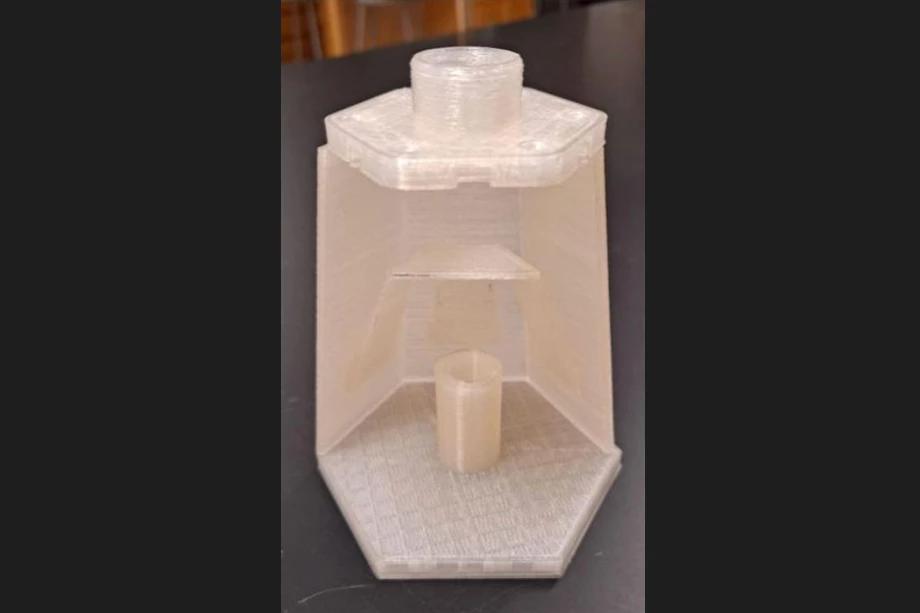Lead-contaminated tap water is still a problem in much of the world, where conventional lead removal filters may be too expensive for most households. An inexpensive new filter could help – and it was designed by a group of high school students.
The project is being spearheaded by Rebecca Bushway, who is a science teacher at Barrie Middle and Upper School in Silver Spring, Maryland. She was motivated after seeing video of a woman in Michigan turning on her tap, releasing a stream of water which was visibly brown with dissolved metals from her home's pipes.
Bushway asked the students in her upper-level high school chemistry class if they could invent a low-cost filter that would remove lead from such water.
Due to COVID restrictions at the time, the home-based students proceeded to discuss designs for the device via the internet. When they returned to the classroom last spring, they 3D-printed a prototype out of biodegradable plastic.

The resulting filter is 3 inches long (76 mm), and screws onto the end of an existing faucet. It utilizes a mixture of calcium phosphate and potassium iodide powder, contained within a series of hexagonal structures through which the water spirals on its way down.
As lead-tainted water flows through the device, the lead binds with the calcium phosphate, resulting in the formation of lead phosphate and free calcium. A nylon screen at the bottom of the filter traps the lead phosphate, which is an inert solid. The calcium, which is harmless to consume, proceeds through.
Once the calcium phosphate is used up, dissolved lead in the water reacts with the potassium iodide, causing the water to turn yellow. This visual cue lets homeowners know that the filter is no longer functioning, and needs to be replaced.
That said, plans call for a future version of the device to incorporate a miniature spectrophotometer and an LED at the bottom. As soon as the spectrophotometer detects the yellow color – even when lead levels are so low that the color isn't detectable by the human eye – it will trigger the LED to illuminate. It is hoped that once they reach production, the filters could sell for as little as US$1 each.
"Ultimately, this experience has shown students that they can make a difference to somebody, and there are problems that they can fix with science," said Bushway.
Team members are presenting their work this week at spring meeting of the American Chemical Society.
Source: American Chemical Society via EurekAlert




